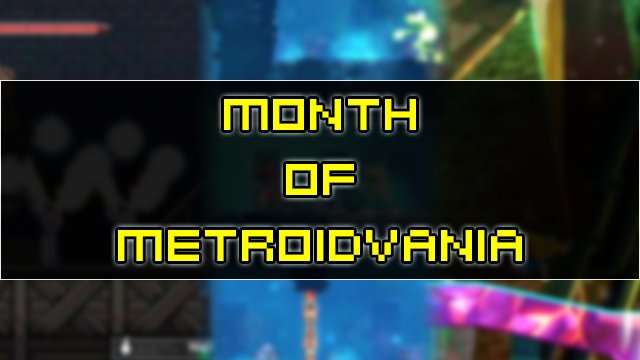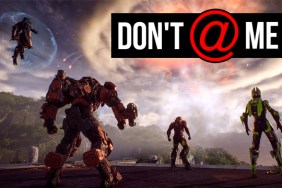While any time is a good time for a Metroidvania, Drinkbox Studios, White Rabbit, and Motion Twin must have all gotten together and decided that August was the best time for a Metroidvania. Developer Bit Kid must have just missed that conversation, as Chasm came out at the end of July. Guacamelee 2, Death’s Gambit, and Dead Cells all released within a few weeks of each other. And while they can peacefully coexist with each other, the prevalence of battle royale makes it hard to not rank them and declare a winner winner chicken dinner. So how do the entries in the Month of Metroidvania stack up?
Month of Metroidvania: Death’s Gambit
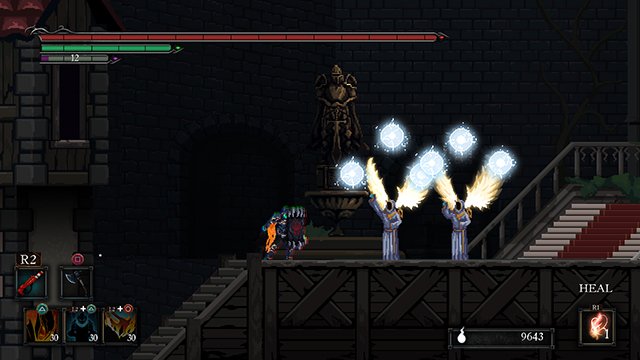
Death’s Gambit isn’t directly a Metroidvania but we can squeeze it into that genre with a little bit of work. It is (almost to a fault) inspired by Dark Souls, which, in turn, is a modernized take on Castlevania. With that logic, it is a Metroidvania. It’s just not a good one.
While challenge is inherent to the Soulsborne genre, Death’s Gambit’s controls can’t keep up with the demanding difficulty. Aside from the fact that you have to move with the analog stick, sluggish, awkward inputs often make death feel like it was out of your hands. Swings and evasive maneuvers play too far after you’ve hit the button, which usually results in late attacks or dodges and then multiple unnecessary swings and rolls. This lag drains your stamina, leaving you wide open to attacks and an eventual frustrating death. Blocking is faulty too since enemies can swipe through your shield and hit your backside as they pass through your two-dimensional character.
Deliberate animations are one thing but this game lacks the nuance to build the game around it. Enemies are often fast like an action game, which doesn’t work for a game with slower animations. There’s a disconnect and it is a rotten stain on the core of the game.
However, the storytelling is unique and the performances are solid. The pixel art can even look fantastic, despite the inconsistent, crude South Park-like animations the game sometimes has.
The competition in Soulsborne games and Metroidvanias is incredibly stiff. And whether you consider it more as a Soulsborne or Metroidvania shouldn’t matter; Death’s Gambit just not a good game regardless of what genre you throw it in.
Month of Metroidvania: Guacamelee 2
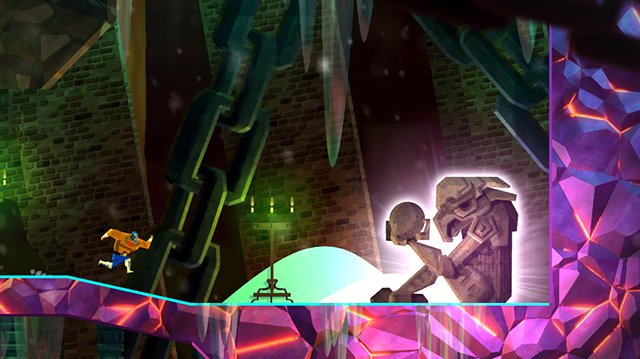
Guacamelee was arguably one of the best modern reincarnations of Metroid and Castlevania and contained obvious homages to each. Guacamelee 2 is quite similar to that first game, making it simultaneously impressive but ultimately not as exciting. But for what it lacks in ingenuity, it makes up for in satisfying platforming and smooth combat.
Well, for the most part. It’s hard to congratulate a game too much for almost wholeheartedly copying over its moveset. While that sameyness took away the joy of finding new and experimenting with new powers, they were some good powers to steal.
Guacamelee 2’s vast ability set allows both platforming and combat to thrive because almost every power has a dual purpose. Gauntlets require precise timing and intricate knowledge of the protagonist’s toolset and can often play out like an intense series set of Super Meat Boy levels. Fights also succeed because of enemy variety and the responsive fighting controls that let the player execute satisfying, lengthy juggles.
It doesn’t rely of navigation and exploration like other entries in the genre; it always tells you exactly where to go. When you break the sequel down, its descriptions liken it more to a game like Celeste mixed in with a simplified two-dimensional version of Devil May Cry. But it still has enough Metroidvania elements to count as one, even if a good portion of those elements are directly carried over from the original game.
Month of Metroidvania: Dead Cells
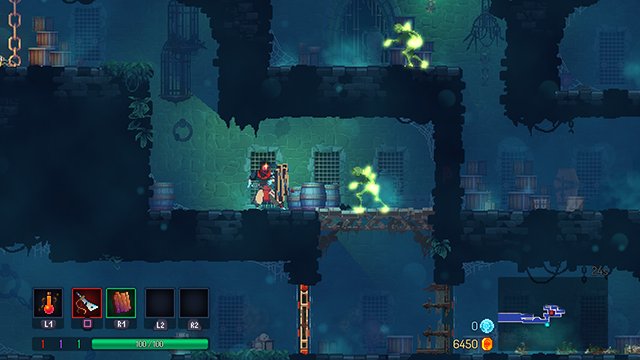
Dead Cells is the antidote to Death’s Gambit’s lackluster combat and Guacamlee 2’s slightly uninspired design. It doesn’t hide its inspirations but it doesn’t need to; it’s a beautiful combination of old and new and the best Metroidvania this year.
It may be a roguelike, but it’s in the vein of Rogue Legacy where almost all deaths can be considered a success. Persistent upgrades give every run a purpose and bring down some of the difficulty inherent to roguelikes that can be off-putting to newcomers.
While it has upgrades that unlock more of the map and requires some exploration in its procedurally generated levels, Dead Cells is quite a bit more combat oriented than its peers. Unlike Death’s Gambit, it’s fast, responsive, and a blast to switch between and master all the different weapons.
Although fluid fighting can make you feel like a destructive force, early enemies can still stomp your undead, booger ass to oblivion, which always ensures that you can’t meander through levels. It requires your full attention but gives you the controls to that make it fun to focus that intently. Even though changing all health pickups to baguettes is worthy of mentioning, it barely holds a candle to Dead Cells‘ fantastic persistent upgrades, gorgeous art, and responsive, fast-paced combat.
The Metroidvania genre is special. It’s specific enough to have its own general set of parameters but loose enough to allow for creative minds to cleverly spin the tropes and clichés into something fresh and spectacular. It’s rare for a genre to adhere so closely to its old-school roots while still keeping up with modern design, as games like Guacamelee, Dead Cells, Axiom Verge, and Hollow Knight have showed us. If only we could come up with a better name than “Metroidvania.”
